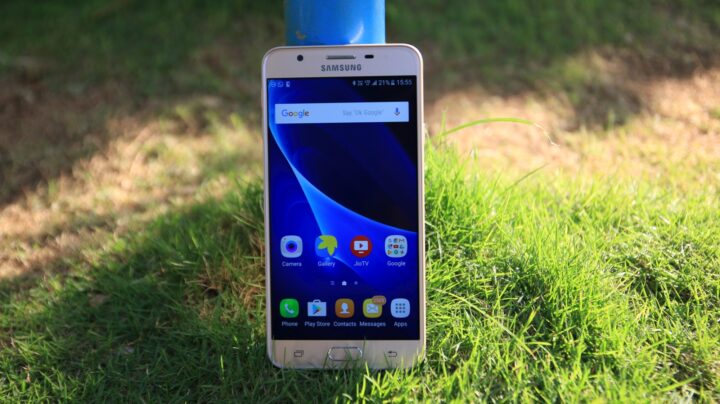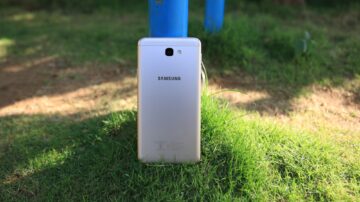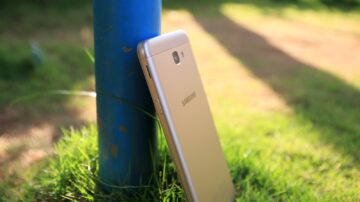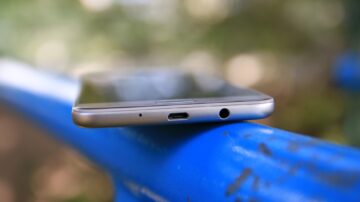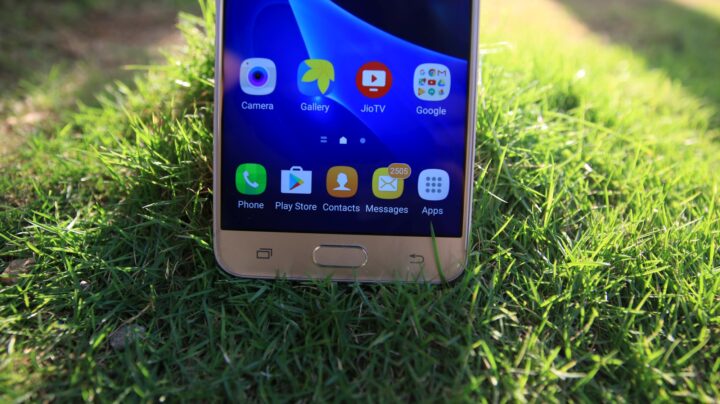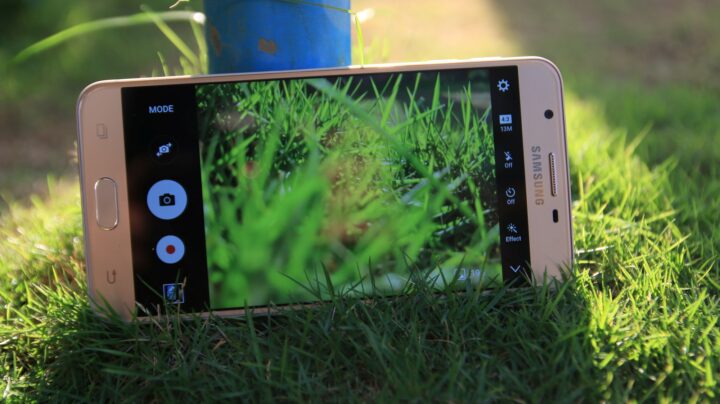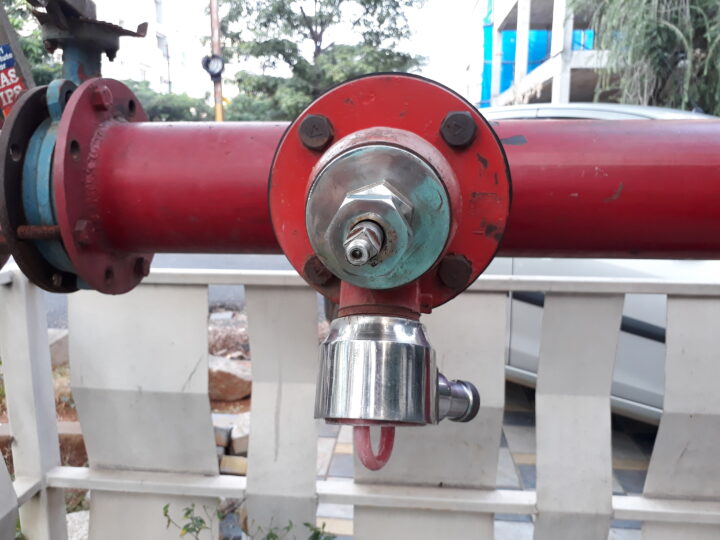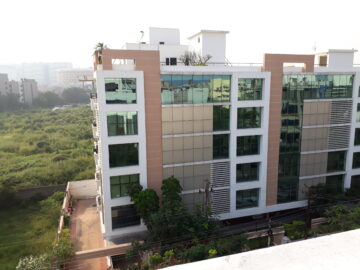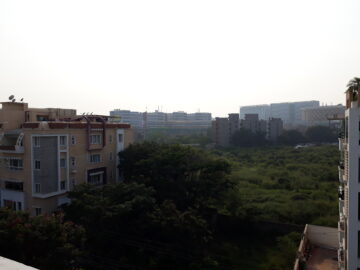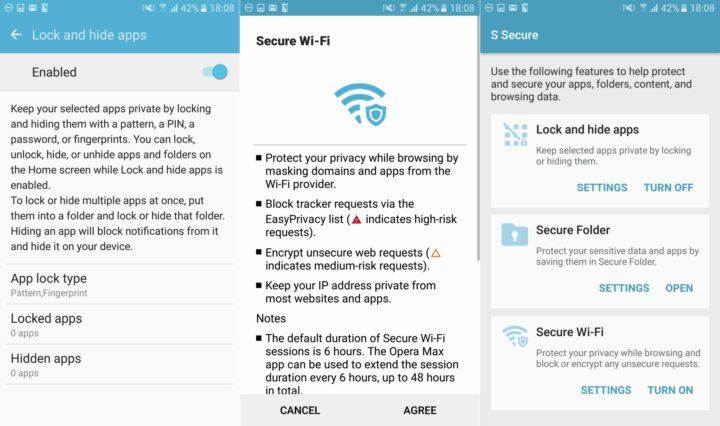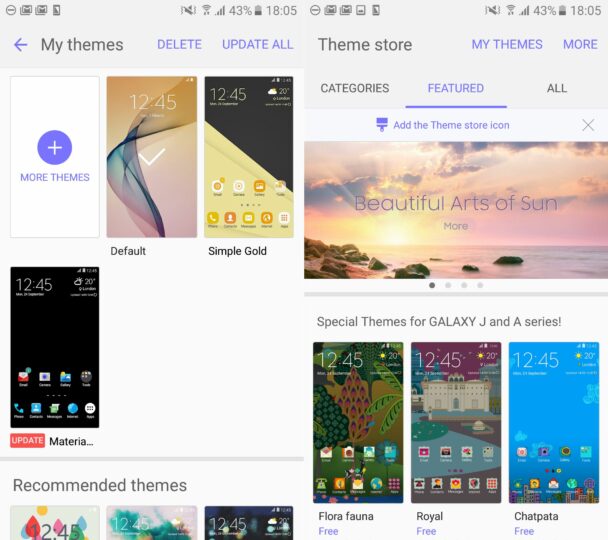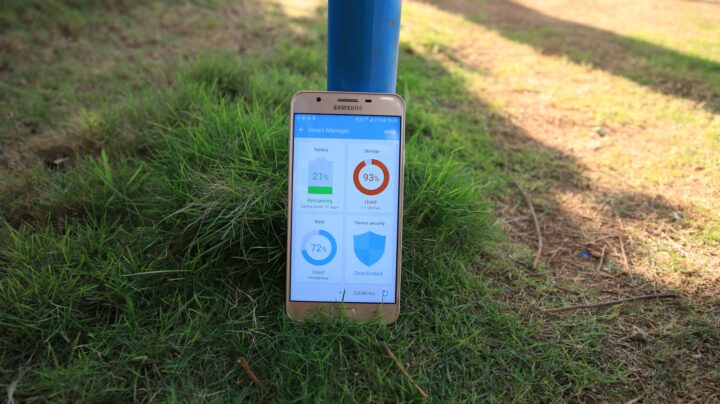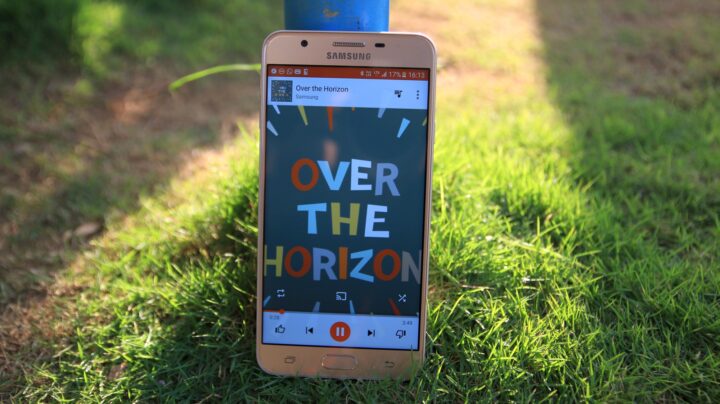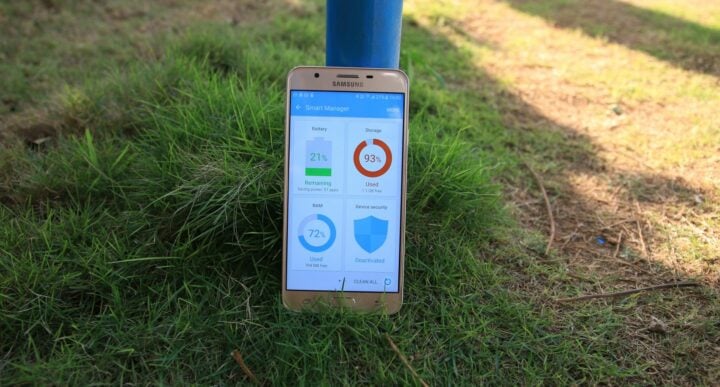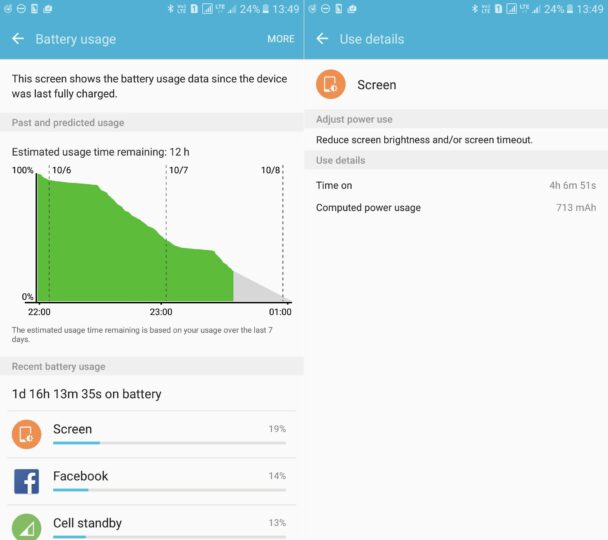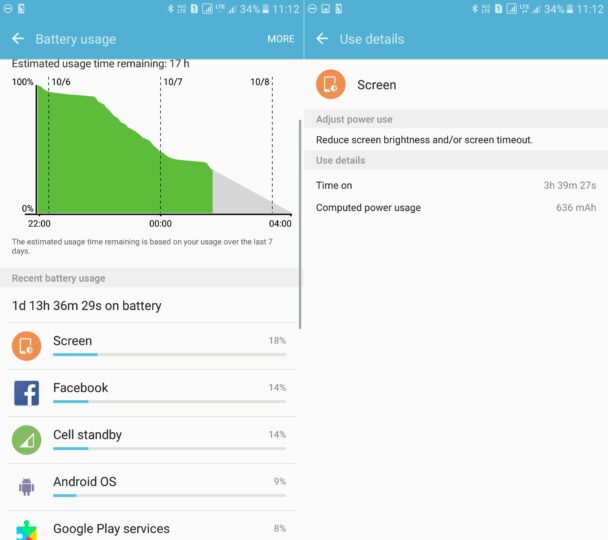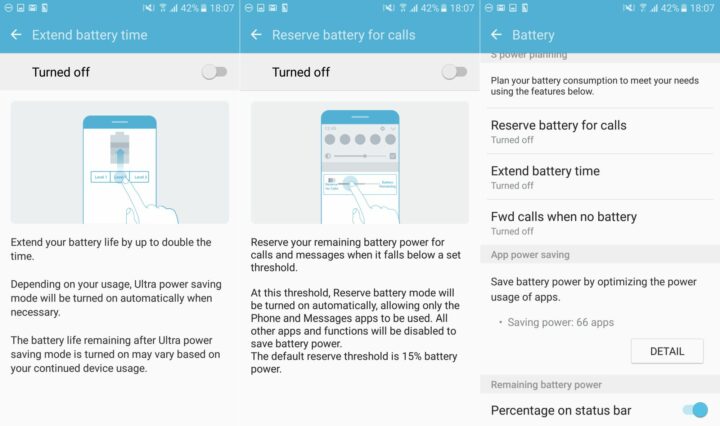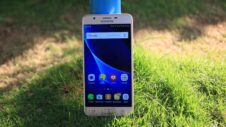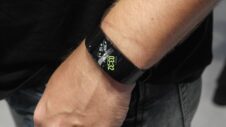The Galaxy J5 (2016) and Galaxy J7 (2016) marked Samsung's first foray into making budget smartphones with premium builds, a move that was becoming increasingly necessary for the company to compete with the affordable yet premium smartphones from Chinese manufacturers. Like it did for its flagships with the Galaxy Alpha and then the Galaxy Note 4, Samsung started out small, with the new J5 and J7 keeping the removable battery and plastic back while getting a metal makeover on the sides. With the Galaxy J5 Prime and Galaxy J7 Prime, the Korean giant gave its budget lineup its first truly premium treatment.
There's no removable battery on the J5 and J7 Prime thanks to their all-metal bodies, and while that alone might make for a big refresh to Samsung's affordable smartphone lineup, the company has also made other changes. The J5 Prime and J7 Prime get fingerprint sensors on the front, and they also introduce a notification light to the galaxy (pun intended) of sub-$300 Samsung smartphones.
But while these are all interesting additions, they have also affected the retail price of these handsets. The Galaxy J7 Prime, which we had the chance to review, is priced at Rs. 18,990 (roughly $285) in the Indian market. At that price, you can buy phones with the Snapdragon 820 processor and other high-end specs from Chinese brands, which means Samsung continues to battle it out mainly with its brand value and the fact that its smartphones are available from every brick and mortar as well as online store.
Does the Galaxy J7 Prime offer enough to justify a price that gets you flagship-grade phones in some markets? Let's find out in our official review.
Design
The metal unibody on the Galaxy J7 Prime gives the device the premium look and feel one would expect, although the phone keeps the same overall design that we have been seeing on Samsung smartphones for a few years now. A closer inspection reveals an important difference, though – Samsung has changed the location of the loudspeaker from the back of the device to the right side, above the power button. It's a welcome move; the loudspeaker still directs sound away from you, but it's better than having it at the back where sound can easily be muffled depending on what surface the phone is lying on.
Samsung makes a point to note that the Galaxy J7 Prime's camera module sits flush with the rest of the body, a design element that doesn't negatively affect the phone's thickness. Again, all that metal means the phone feels nice to hold, although the metal also means the J7 Prime is quite slippery. Also, the back isn't all metal – the top and bottom parts are made of plastic to help the antennas work better, but you will never notice this plastic in regular usage. The microSD and SIM slots are accessed from the left side, with a pin required to take the trays out. Yes, this inconvenience has finally found its way to Samsung's low-end lineup, in addition to the lack of a user-replaceable battery.
But the Galaxy J7 Prime is a well-built phone, with the only downside being the rather cheap tactile feedback of the volume and power buttons (the volume buttons are also placed a bit too high for my liking). The premium design is not something Samsung can be proud of in this day and age, as considerably cheaper phones from Chinese manufacturers come with equally premium designs, but it is good to see the company finally taking a step towards the same for its affordable devices.
Display
Since the Galaxy J7 Prime falls in the budget category, that premium design had to mean Samsung made sacrifices elsewhere, and the sacrifice is most apparent when you look at the phone's display. Gone is the Super AMOLED display that adorned the first two Galaxy J series and in its place is a regular LCD panel. The resolution has gotten a boost to Full HD, which means the display offers a sharp viewing experience, but the LCD panel simply cannot match the beauty of a Super AMOLED display.
The J7 Prime's display has vivid colors for an LCD display, but they do not compare to the eye-popping contrast offered by an AMOLED panel. The same goes for the brightness levels, although the display can hurt your eyes if you turn the brightness all the way up indoors. Speaking of brightness, there's bad news – the Galaxy J7 Prime is yet another budget Samsung phone without an ambient light sensor, which means there is no auto brightness option. An Outdoors mode offers a workaround for those bright and sunny days, but at this point it is simply getting ridiculous that Samsung is putting out phones without such a basic feature.
We thankfully have a notification LED this time around, and the one on the J7 Prime can show a range of different colors. The LED is bright and easily noticeable at night, although outdoors it can be slightly hard to see based on how intense the sun is or how much light is around you.
Camera
The Galaxy J7 Prime features a 13-megapixel rear camera and an 8-megapixel front-facing camera, and both cameras fail to impress when it comes to image quality. The selfie camera is the bigger disappointment; you would expect an 8-megapixel sensor to capture a notable amount of detail, but images taken by the J7 Prime's front camera come out extremely soft and washed out, even on a bright and sunny day (see the selfie sample below to know what I mean). The photo quality is no different or better than the 5-megapixel cameras that have adorned other budget Galaxy phones. Samsung should have used the resources spent on the higher-resolution sensor in other areas (like putting in an auto brightness sensor).
The rear camera is by no means bad – photos taken in ample light come out noise-free and with good detail. In fact, the J7 Prime manages to capture more detail than the Galaxy A9 Pro's primary camera, despite costing almost half as much. But you can only zoom in so much before the detail goes away and softness creeps in. The camera also tends to falter with areas in shadow; HDR mode helps in such scenarios, but since you have to manually switch to HDR mode, it becomes an inconvenience. Low-light performance is commendable when there are a lot of artificial lights around, but unsurprisingly the phone is unable to do much in extremely low-light situations.
The camera app on the Galaxy J7 Prime can be launched with a double press of the home button, and its user interface is similar to the camera app on other Samsung devices. You get the usual customization options of filters, photo resolution, flash and timer, and a few different shooting modes, including Night, Pro, HDR, Panorama and Beauty mode. As with all of Samsung's non-flagship phones, the Pro mode only offers basic controls – you can change exposure, ISO values and white balance, but you don't get options for shutter speed control or shooting images in RAW.
Software
Samsung has been a bit cheeky when it comes to the software on the Galaxy J7 Prime (and the Galaxy J5 Prime as well, I presume). You see, the J7 Prime runs Android 6.0.1 Marshmallow with the same user interface found on pre-Galaxy Note 7 devices, but Samsung has built in a few features that were introduced on its now discontinued sixth-generation Note flagship. The J7 Prime comes loaded with Samsung Cloud, new Gallery app (both of which are also available for the Galaxy S7 lineup through a software update) and the new Samsung Notes app, which integrates all of the company's note-taking and drawing apps into one.
The J Prime series also gets the exclusive S Secure feature. S Secure is an extension of Samsung's KNOX security solution and allows you to lock apps, files and other data behind a password (or fingerprint) and also enable safer browsing on a Wi-Fi connection. Locking and hiding apps does what any of the app locking apps on the Play Store do – you can enable the lock for apps of your choosing, which will make the phone ask for your password every time you open these apps.
Secure Folder, also found on the Note 7, is where things get interesting. If you have used Samsung's KNOX feature on any other Samsung phone, you will be familiar with what Secure Folder does. For those who haven't, this feature basically creates a secure virtual environment inside your phone where your chosen apps can reside with data that cannot be accessed outside Secure Folder. It's a way of creating two different user accounts on the device, with everything inside Secure Folder working independently of the regular content on the phone.
What advantage does it give you? Well, for one, you can actually have two different WhatsApp accounts active on your phone thanks to Secure Folder, and the same goes for many other apps that you might not otherwise let you have two accounts on the same device. You can also keep media files you don't want anyone else to see locked inside, or create a different profile for a game in case you share your phone with your kid or a friend/family member. Samsung doesn't offer multi-user support on its smartphones, but Secure Folder certainly acts as a nice alternative, one that is much more secure thanks to Samsung's KNOX security solution.
Then there's Secure Wi-Fi. As the name suggests, it offers increased security when you're browsing on a Wi-Fi connection. Websites cannot use tracking data when the feature is enabled, and your IP address is hidden from most apps and sites. For some reason, Secure Wi-Fi can only be enabled for a maximum of 6 hours, unless you use the Opera Max browser, in which case Secure Wi-Fi can be enabled for two days (48 hours).
Now that we are done with the security stuff, let's talk general features offered by the Galaxy J7 Prime. There's support for themes and access to the theme store – most themes that you see on the flagship Galaxy devices are available on the J7 Prime as well, in addition to a few themes exclusive to the Galaxy J series. S Bike mode is included for Indian users, and so is an advanced power saving mode (one that I will talk about in the battery section of this review). There is also Samsung's Ultra Data Saving Mode for internet data compression, a feature that is now part of every budget phone from the company, at least in the Indian market.
Performance
The Galaxy J7 Prime is powered by Samsung's octa-core Exynos 7870 processor and 3GB of RAM. As I mentioned in the introduction of this review, for the price of a Galaxy J7 Prime you can buy phones with the Snapdragon 820 SoC inside, so the Exynos 7870 with its Cortex-A53 cores is a rather poor proposition. Performance is generally quite good, with smooth animations and short app launching times. Multitasking also works fine thanks to the 3GB of RAM, and I didn't notice any instances of the phone killing apps in the background too quickly.
In fact, Samsung seems to have made some exclusive optimizations to the J7 Prime, as it offers a smoother user experience than any other budget device from the company. But there were moments when everything on the phone would slow down to a crawl. Lag would permeate everything from the lock screen to app switching, especially when I had navigation on Google Maps active in the background. For a device that costs almost $300, that is rather unacceptable here in 2016.
Also unacceptable is the fact that the J7 Prime can't offer a consistently smooth frame rate in high-end gaming titles. In Modern Combat 5, playing even on medium graphical settings produced stutter, which is, again, a shame considering the price tag carried by the J7 Prime. Asphalt 8, however, runs fine, which means games with lesser graphics should also run well.
Fingerprint sensor
The Galaxy J5 Prime and Galaxy J7 Prime are Samsung's first budget phones with fingerprint sensors. The sensor is integrated into the home button and works on touch, but it is rather problematic in operation. I have lost count of the times I would place my finger on the home button and the phone would refuse to detect my fingerprint. I would either get a warning that my finger wasn't covering the entire home button (even though it was), or that I needed to keep the button pressed a little longer. No, these errors weren't because I was at fault, but clearly because Samsung seems to have either used a cheaper sensor than what it uses on its higher-end devices or has somehow messed up its implementation.
But when the sensor works, it works fine and is as fast as the fingerprint sensors on other Samsung devices. As we earlier noted in a separate article, the J7 Prime also detects your fingerprint when the phone is locked and the screen is off, meaning you don't have to press the home button to unlock the device. Oddly, the sensor never seemed to have detection issues when used this way, although it would sometimes take up to two seconds to wake up the phone.
Audio Quality
The loudspeaker on the Galaxy J7 Prime is the best yet on any of Samsung's affordable smartphones. It's not great, though – the sound produced by the speaker is a tad too sharp and shrilly, and Samsung has clearly tuned it to focus on high frequencies (treble). There's next to no depth to the lower frequencies (bass), resulting in hollow sounding audio. There's very little distortion, however, and the volume can get quite loud, so your experience listening to audio without headphones won't be as poor as it has been on previous devices from Samsung in the sub-$300 price range.
The supplied earphones get the job done and produce noticeable bass without crossing into the territory of earphones you find bundled with costlier devices. Vocals in music tracks can sound rather sharp at times, and you would do well to keep the volume level below the maximum to avoid hurting your ears, especially in audio files with low bit rates.
Call quality on the Galaxy J7 Prime had some issues, although it's unclear if they were limited to my particular unit or if they affect every J7 Prime. There were frequent signal drops in calls – the calls wouldn't be disconnected, but I would have to move around a bit to be able to hear the other party again. The earpiece volume also leaves much to be desired, and even the loudspeaker can't help much when it comes to voice calls. However, network reception was never a problem when it came to using mobile data, which made the call issues seem particularly odd.
Battery Life
The Galaxy J7 Prime comes with a 3,300 mAh battery, same as the Galaxy J7 (2016). The J7 (2016) had terrific battery life, and while the J7 Prime doesn't last as long (likely because of the increased screen resolution), it still has impressive endurance. The phone easily lasts a day with medium to heavy usage, involving a lot of social media, three email accounts, capturing photos, and music streaming over Bluetooth. I also had my Gear S2 connected at all times and would use the phone on an LTE connection for a few hours every day (in addition to having two SIM cards active).
Getting six to seven hours of screen time was quite easy, and on the days I wouldn't use the phone much, it would manage to last for a day and a half before I would need to connect it to the charger. Long gaming sessions do take their toll, but that is to be expected from any smartphone today (unless they sport a 5,000 mAh battery like the Galaxy A9 Pro). Idle battery drain is very low – the phone would only lose a maximum of 3 percent of battery charge overnight on a Wi-Fi connection.
The Galaxy J7 Prime comes with Samsung's Ultra Power Saving Mode (UPSM), which disables all but the most basic functions and disconnects Wi-Fi and mobile data when the screen is off. There's also a new battery saving feature called S power planning, which further extends the functionality of UPSM. S Power planning has three different options: 1) Reserve battery life for calls 2) Extend battery time, and 3) Fwd calls when no battery. The first option, when enabled, disables everything but the phone and messaging apps on the device. Nothing else works in this mode, which means you can expect battery drain to be drastically reduced.
The extend battery time, meanwhile, will automatically enable UPSM depending on the amount of battery life you want to save. You can choose from three different levels of battery savings in this mode, although I was unable to make the phone go into ultra power saving mode on its own at any moment. The last option – Fwd calls when no battery – does what its name suggests. Before shutting down after the battery gets depleted, the phone will enable call forwarding to your chosen number, and then disable it when you turn the phone back on. You can also choose to have your chosen contact be notified via a text message that all your calls will be forwarded to them.
Wrap Up
The Galaxy J7 Prime is the most premium, most feature-packed budget phone from Samsung yet. I've used the word budget a lot of times in this review, but with a $285 price tag, I'm not sure if that's the right word to use. Being one of the world's largest corporations, Samsung's inability to offer impressive hardware for rock bottom prices is something the company will probably have to bear forever, but we still have to consider the fact that Chinese OEMs are putting out stellar smartphones at prices lower than what Samsung devices command across every segment.
Smartphones like the Lenovo Z2 Plus and the LeEco Le Max 2 cost the same as the Galaxy J7 Prime in the Indian market and are packed with specs you would only find on a flagship device a couple of years ago. Chinese manufacturers have also come far in terms of design and build quality, and you would be hard pressed to tell the difference between the J7 Prime and its competitors as far as those factors are concerned.
But we also need to face the fact that consumers always feel more confident buying things from big and popular brands, and if you fall in that camp, the Galaxy J7 Prime is certainly the best you can get in Samsung's budget lineup. It's got a nice design, a fingerprint sensor, mostly quick performance, and great battery life, in addition to a rear camera that does well in good lighting conditions. You also get a few exclusive software features not available on other Samsung devices, and the only real letdowns are the call issues, average audio quality, and the run-of-the-mill LCD display.
Of course, those who crave Samsung's beautiful Super AMOLED displays can always opt for the Galaxy J7 (2016). The J7 (2016) is a good device in its own right, but it's only around $40 (Rs. 2,500 in India) cheaper than the J7 Prime, making it a better alternative only for those who are really strapped for cash or really need their phone to have an AMOLED display. The decision is up to you, of course, but if you can afford the Galaxy J7 Prime, it is certainly the best smartphone you can get from Samsung under $300.
| Pros | Cons |
| Premium design | Unimpressive front camera |
| Great battery life | No Super AMOLED display |
| Fingerprint sensor on a budget | Software performance could have been better |
| Above average rear camera | Call issues on our review unit |
| Useful software features | |
| Improved audio quality |

